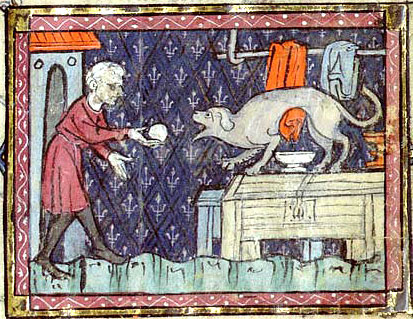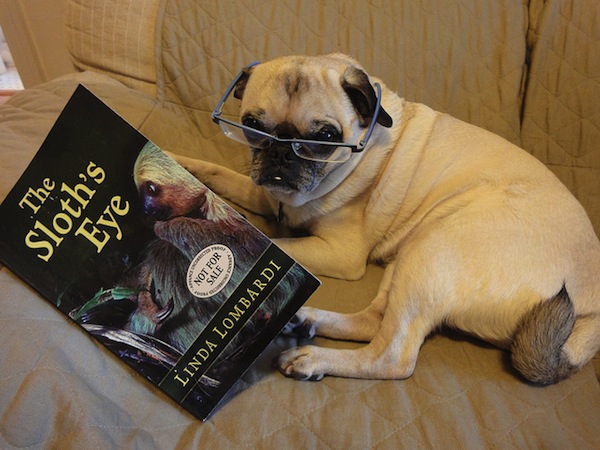Quirky History: Friend, Pet, and Healer of Wounds
The dog is man’s best friend. The fact that there are 43.3 million American households that own a dog would testify to the accuracy of that statement. In fact, the relationship between dogs and humans is as old as human civilization itself. And keeping dogs as pets goes back to the late Middle Ages.
During the Middle Ages, dogs were mostly kept as work animals. They had a function to fill in everyday lives of humans, e.g., as hunting dogs, herding dogs, or guard dogs.

Source: Bibliothèque Nationale de France, fr. 1951, Folio 20r.
Manuals were published with instructions on how to care for your dog. A hunting dog should be fed parts of the meat of the animal it helped to kill. A guard dog shouldn’t be petted too much or fed by hand; that would make it too domesticated. Dog shelters were to be built a few feet above ground so that the dog could find shelter during the heat of the day.
Towards the end of the Middle Ages, in addition to being used for hunting, herding animals, and guarding your house, dogs were increasingly held as pets. They were particularly popular in monasteries where both monks and nuns kept dogs for company. Dogs were so popular, in fact, that ordinances were written prohibiting dogs at mass, because that would interrupt the service.

Source: British Library, Stowe MS 17 f. 100r.
The phrase “man’s best friend” comes from the idea that dogs are loyal to their owners. We find this idea expressed in various forms in the parables of the medieval bestiaries.
Bestiaries are a genre of literature that was very popular during the thirteenth and fourteenth centuries, particularly in England. Here, stories are told of fantastical beasts and real-life animals with the intention of presenting the reader with a Christian parable.
According to the bestiaries, dogs heal their own wounds by licking them, which is supposed to symbolize the healing power of confession on the wounds of sin. Also, a dog always returns to its own vomit, which is meant to symbolize how sinners return to their sinful ways after confession.

Source: Bibliothèque Nationale de France, fr. 1951, Folio 20v.
Moreover, a young dog tied to a patient will heal the patient’s internal wounds. And, a dog that crosses a hyena’s shadow will lose its voice. Finally, hungry dogs are used to pull up mandrake roots, which is otherwise deadly to humans.
One of the most famous allegories that tell the tale of dogs’ loyalty to their owners is that of the fictional king Garamantes and his one hundred dogs. Garamantes was taken captive and imprisoned by his enemies. He was freed from captivity by his one hundred dogs who went in search for him, broke into the prison, and brought him to safety.

Source: British Library, Royal MS 12 F. xiii f. 30v.
Dogs’ loyalty to their owners is also the reason why dogs are often included in portraits or on effigies, as symbols of the fidelity and loyalty of the person being portrayed.

Source: British Library, Harley 4431 f. 4.
If you want to read more about pets in the Middle Ages, check out our post about medieval cats being jerks.




